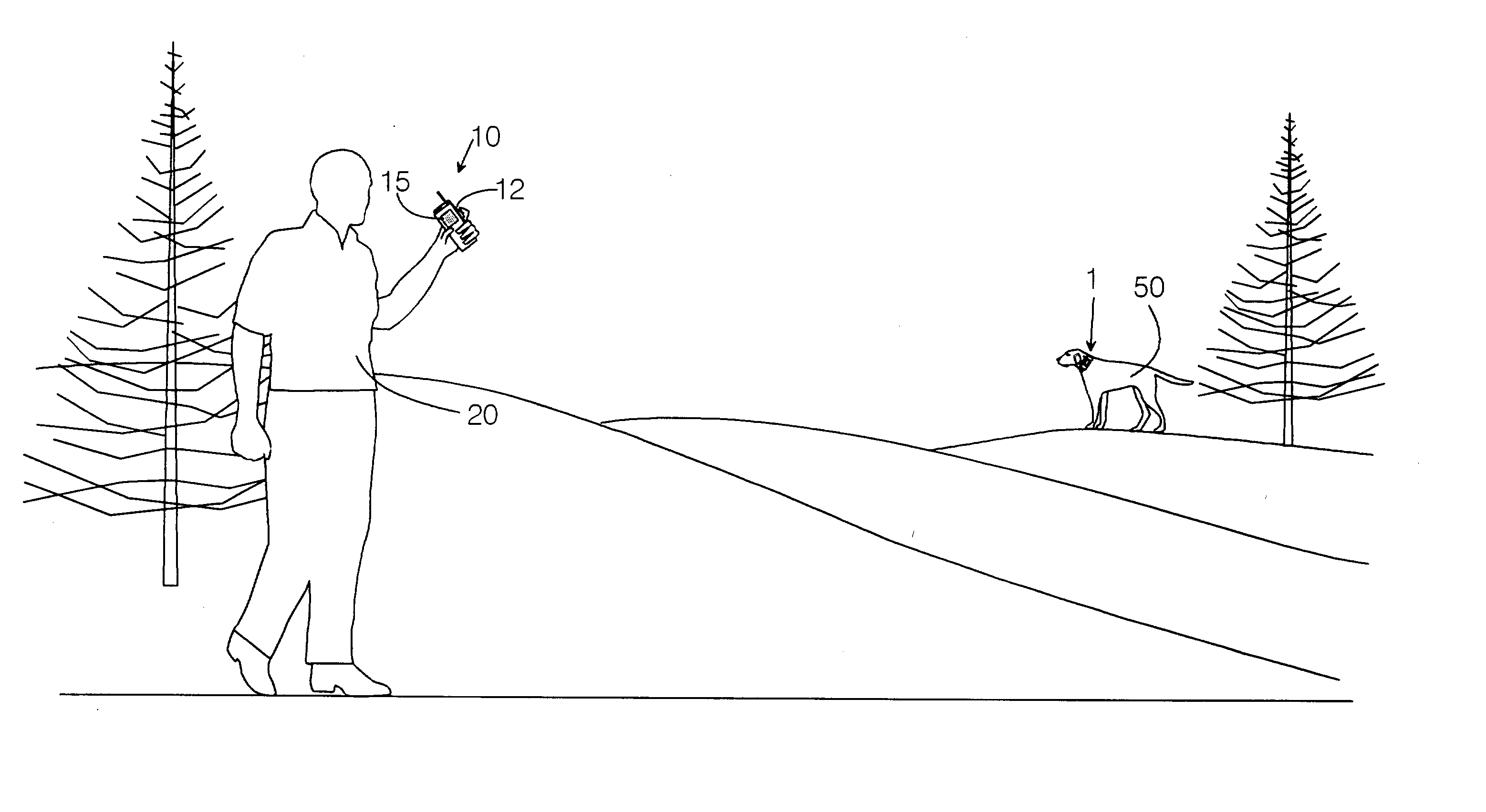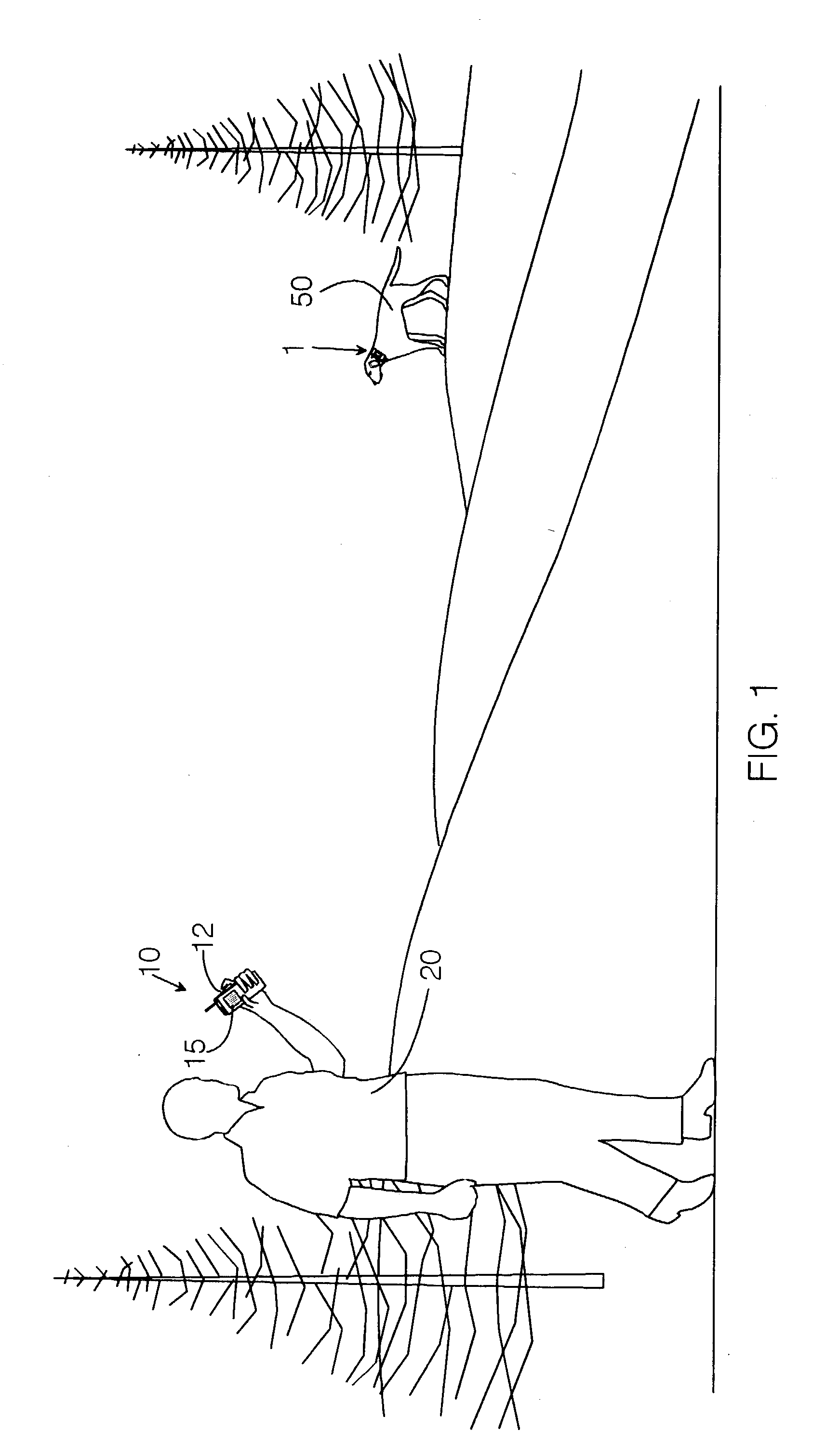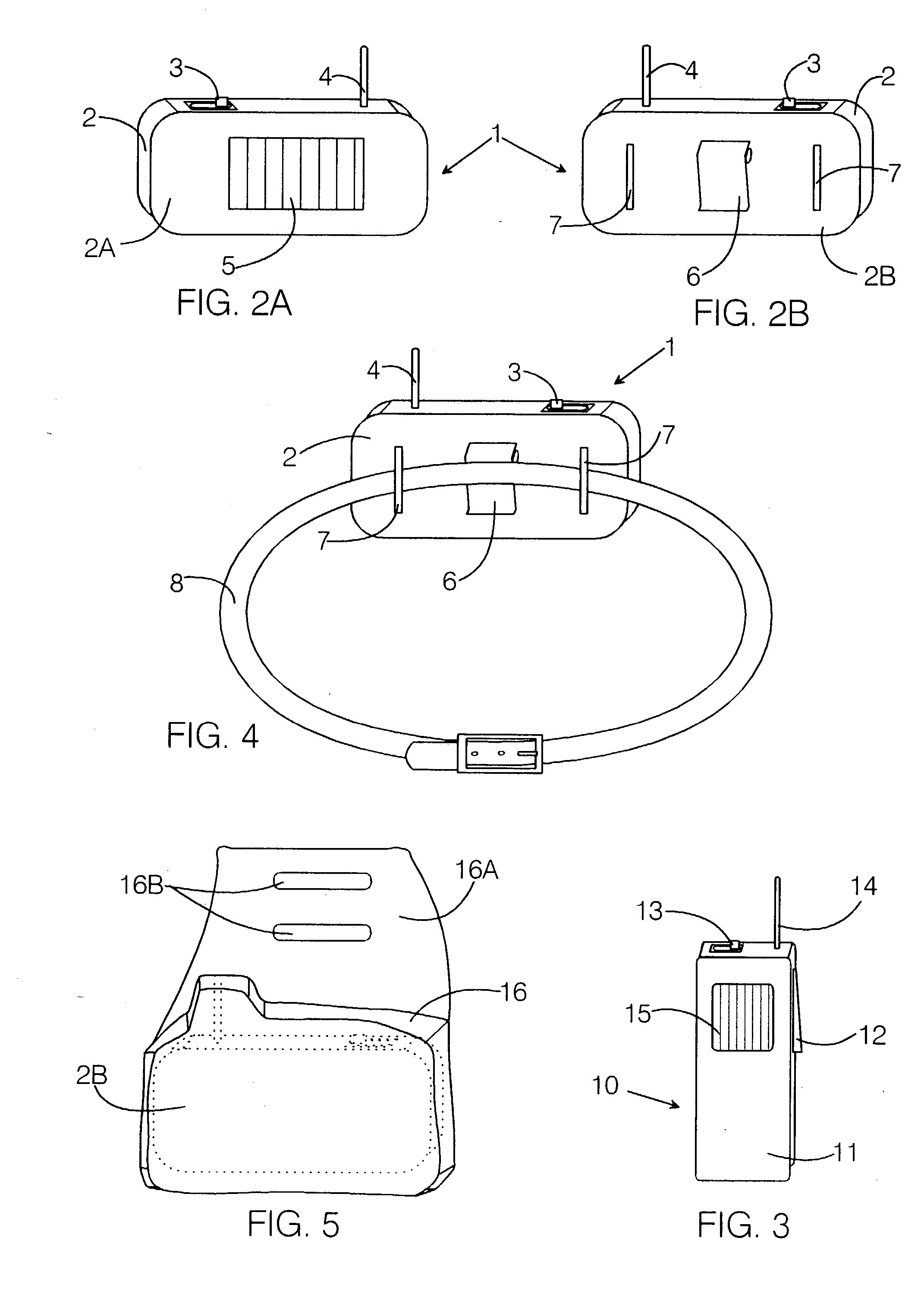Voice receiver and annunciator for pets
a voice receiver and voice technology, applied in the field of animal control devices, can solve the problems of ineffective voice commands, ineffective voice commands, and only effective commands, and achieve the effect of reducing the number of voice commands
- Summary
- Abstract
- Description
- Claims
- Application Information
AI Technical Summary
Benefits of technology
Problems solved by technology
Method used
Image
Examples
Embodiment Construction
[0024] FIG. 1. shows the apparatus according to the invention. An animal handler 20 is holding a transmitter unit 10. Off in the distance is a dog 50 with a receiver / emitter unit 1 attached to its collar 8. The animal handler 20 gives voice commands to the dog 50 by speaking into the transmitter unit 10, using the accustomed tone and inflection in his voice. The dog 50, well beyond the audibility distance of the animal handler's voice, hears the voice commands through the receiver / emitter unit 1 that is attached to the collar 8. Ideally, the dog is trained to respond to specific voice commands and will react accordingly when it hears the voice command.
[0025] FIGS. 2A and 2B show the Preferred Embodiment of the receiver / emitter unit 1, comprising a durable, water-resistant housing 2 having a front face 2A and a rear face 2B, a power switch 3, an antenna assembly 4, and a loudspeaker 5. In the embodiment shown in FIGS. 2A and 2B, the antenna assembly 4 projects out of the housing 2. A...
PUM
 Login to View More
Login to View More Abstract
Description
Claims
Application Information
 Login to View More
Login to View More - R&D
- Intellectual Property
- Life Sciences
- Materials
- Tech Scout
- Unparalleled Data Quality
- Higher Quality Content
- 60% Fewer Hallucinations
Browse by: Latest US Patents, China's latest patents, Technical Efficacy Thesaurus, Application Domain, Technology Topic, Popular Technical Reports.
© 2025 PatSnap. All rights reserved.Legal|Privacy policy|Modern Slavery Act Transparency Statement|Sitemap|About US| Contact US: help@patsnap.com



